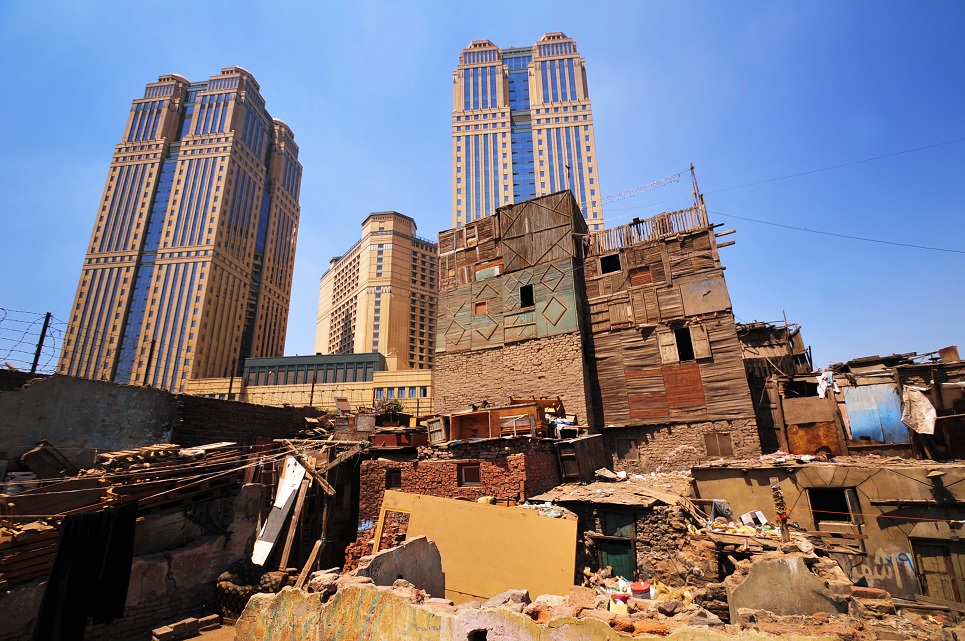Dabaa City in Matrouh governorate is currently witnessing a cultural shift after the announcement of the start of implementation of the nuclear power plant project on a part of its territory. A number of development projects are currently being inaugurated for the advancement of the city and the providence of service for the power plant project.
Daily News Egypt conducted a field tour to highlight the development projects established in Dabaa.
Investing in Dabaa
Governor of Matrouh Alaa Abu Zeid said that Dabaa entered into the strategic development of the governorate in order to keep pace with the nuclear power plant project, through development projects that include a new residential city, Dabaa-Rod El-Farag axis, a sewage project, the nuclear school, El Alamein-Natrun Valley axis, and Dabaa hospital. It is also planned to conduct urbanisation projects in the South Dabaa area.
Mohamed Gaber, managing director of investment in Matrouh, said that the governorate consistently receives requests for investment in Dabaa. He added that Dabaa includes about 28 tourism projects with investments between EGP 50m and about EGP 800m, and these projects provide between 100 and 250 opportunities.
Daily News Egypt interviewed former head of Dabaa City Al-Husseini Ahmed Sanusi two days before Minister of Local Development Ahmed Zaki Badr issued on 27 January decision No. 52 of 2017 to appoint 91 general managers to work in leadership positions including six heads of cities in Matrouh governorate.
Ahmed Mohamed Abdou El-Eskandarani was appointed head of Dabaa to follow Sanusi.

The nuclear school
Sanusi said that 40% of the construction work on the nuclear school was completed. Governor of Matrouh had issued a decision No. 374 for 2015 to allocate land on an area of 33,600sqm (equivalent to 8 acres) in west Dabaa to establish the advanced technical secondary school for energy technology in Dabaa. The Authority for Educational Building offered the school project.
The total cost of the school amounts to about EGP 70m, divided between the establishment of the school buildings at a cost of EGP 43.5m, school furniture worth EGP 7.8m, and workshop and laboratory equipment worth EGP 1.5m. The cost of radiation protection workshops and laboratories amounts to EGP 12.75m.
The school will accommodate 375 students and includes 15 classes on three floors with a total built-up area of 3,260sqm. This is in addition to two dormitories with 436 beds on an area of 11,580sqm. Each building consists of a ground floor and four upper floors.
The school also has workshop buildings, which include mechanical and electricity workshops, electronics workshops, stores, and a radiation protection laboratory, as well as a football stadium, volleyball court, basketball arena, green areas, and a Roman theatre.
The establishment of a station using 130KW solar cells is planned for the roofs of the buildings, using an on-grid network, as well as using solar light columns in the school’s internal streets and walkways.
Sanusi explained that the implementation of works at the school started in June 2016, and is planned to be ready for delivery in May, to start operating in the new academic year in September.
The period of study extends to five years, and lecturers are supposed to be graduates from the College of Engineering. It is planned that school graduates work in the nuclear plant. There will be training courses for applicants before their enrolment in the school.
In terms of curriculum, it will review the courses of technical and industrial education, besides forming working groups of representatives of the nuclear sector and representatives of technical education to prepare and review the curriculum—electronics, electricity, and mechanics—and materials for the nuclear field—nuclear technology, radiation protection, and maintenance of components and systems of nuclear plants.
He added that the school is one of the first schools specialising in teaching energy technology in the Middle East and will provide students with a number of skills, including the identification of concepts related to nuclear technology; programmes for radiation protection; the diagnosis, repair, and maintenance of electronic devices and mechanical equipment; and the identification of the systems and components of nuclear plants.
He pointed out that the land has been allocated for the public benefit of the Egyptian Nuclear and Radiological Regulatory Authority, on an area of 1,000sqm east of Dabaa, to oversee the nuclear plant project.

Developing Dabaa Hospital
The total cost to develop the Central Hospital of Dabaa is worth about EGP 84m.
Mahmoud Al-Halawani, director of the Central Hospital of Dabaa, said that the development work included the construction of buildings and departments of internal fittings, and it increased the hospital’s capacity to 50 beds. It also added a number of new sections and units, including the inner section, CT scans, clinics departments, an emergency reception, laboratories, and pharmacies.
He added that a unit for dialysis that includes five machines was established, as well as six premature babies nurseries. The work included developing and processing an operations department that receives a variety of surgeries, including for bones surgeries, obstetrics, and women’s diseases.
He added that the hospital is being developed in stages to keep work going in the hospital as usual. The area of the hospital after the development work amounts to about 1,500sqm.
He pointed out that the Health Affairs Directorate of the governorate is considering adding a radiation treatment department at the hospital or the establishment of an independent centre.




